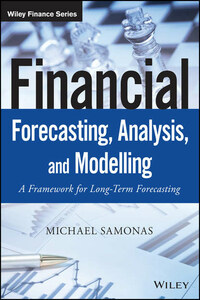This edition first published 2015
© 2015 Michael Samonas
Registered office
John Wiley & Sons Ltd, The Atrium, Southern Gate, Chichester, West Sussex, PO19 8SQ, United Kingdom
For details of our global editorial offices, for customer services and for information about how to apply for permission to reuse the copyright material in this book please see our website at www.wiley.com.
All rights reserved. No part of this publication may be reproduced, stored in a retrieval system, or transmitted, in any form or by any means, electronic, mechanical, photocopying, recording or otherwise, except as permitted by the UK Copyright, Designs and Patents Act 1988, without the prior permission of the publisher.
Wiley publishes in a variety of print and electronic formats and by print-on-demand. Some material included with standard print versions of this book may not be included in e-books or in print-on-demand. If this book refers to media such as a CD or DVD that is not included in the version you purchased, you may download this material at http://booksupport.wiley.com. For more information about Wiley products, visit www.wiley.com.
Designations used by companies to distinguish their products are often claimed as trademarks. All brand names and product names used in this book are trade names, service marks, trademarks or registered trademarks of their respective owners. The publisher is not associated with any product or vendor mentioned in this book.
Limit of Liability/Disclaimer of Warranty: While the publisher and author have used their best efforts in preparing this book, they make no representations or warranties with the respect to the accuracy or completeness of the contents of this book and specifically disclaim any implied warranties of merchantability or fitness for a particular purpose. It is sold on the understanding that the publisher is not engaged in rendering professional services and neither the publisher nor the author shall be liable for damages arising herefrom. If professional advice or other expert assistance is required, the services of a competent professional should be sought.
Library of Congress Cataloging-in-Publication Data
Samonas, Michael.
Financial forecasting, analysis, and modelling: a framework for long-term forecasting / Michael Samonas.
pages cm
Includes bibliographical references and index.
ISBN 978-1-118-92108-1 (cloth)
1. Corporations-Finance-Mathematical models. 2. Corporations-Finance-Forecasting. I. Title.
HG4012.S26 2015
658.1501'12-dc23
2014040071
Cover Design: Wiley
Cover Image: Top:©iStock.com/MarsBars;
Bottom: ©iStock.com/studiocasper
Over the past several years, spreadsheet models have been the dominant vehicles for finance professionals to implement their financial knowledge. Moreover, in the aftermath of the recent financial crisis the need for experienced Financial Modelling professionals has steadily increased as organizations need to plan and adjust to the economic volatility and uncertainty. The level of risk in taking certain decisions needs to be projected using proper financial models and the alternative possible outcomes need to be analyzed. One benefit of this type of analysis is that it helps companies to be proactive instead of reactive. They can avoid or at least mitigate potential negative results that may stem from influences in their industry or within the business itself.
This book provides a step-by-step guide that takes the reader through the entire process of developing long-term projection plans using Excel. In addition, by making use of various tools (Excel's Scenario Manager, sensitivity analysis, and Monte Carlo simulation) it provides practical examples on how to apply risk and uncertainty to these projection plans. Although these projections are not guarantees they can help organizations to be better informed, and thereby provide peace of mind.
Financial Forecasting, Analysis and Modelling: A Framework for Long-Term Forecasting covers financial models in the area of financial statement simulation. It provides clear and concise explanations in each case for the implementation of the models using Excel. It is relevant to a variety of situations. At the most fundamental level, it can help:
○ Project a company's financial performance;
○ Forecast future cash flows and perform a DCF valuation;
○ Present the good, basic, and bad scenarios of the evolution of the company's debt covenants.
At a more advanced level it ensures that the financial analyst or decision-maker is properly informed and comfortable when called to decide the following types of question:
○ What will be the double impact on the liquidity of the organization of a simultaneous increase of 35 % in turnover and a decrease of 10 days in the credit period provided to clients?
○ What will be the range of the company's net debt at a 95 % confidence level based on selected assumptions?








